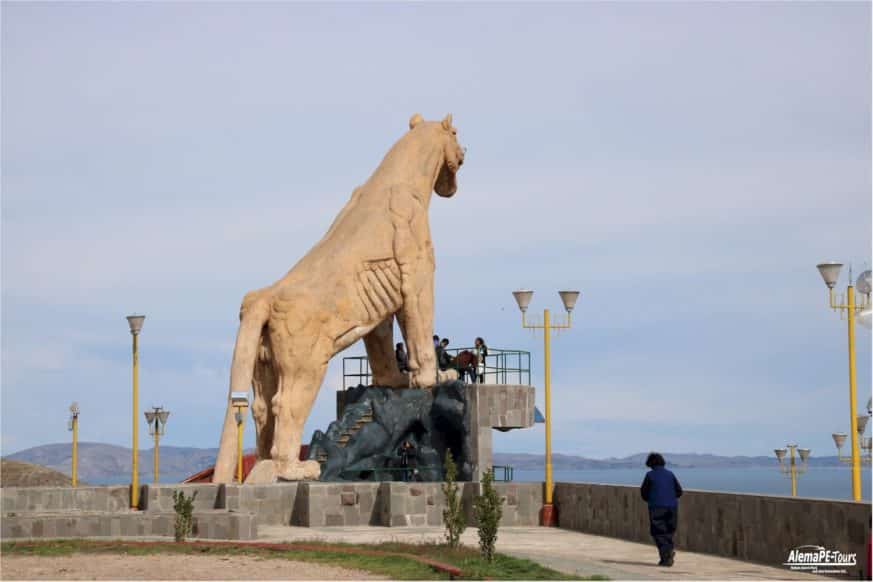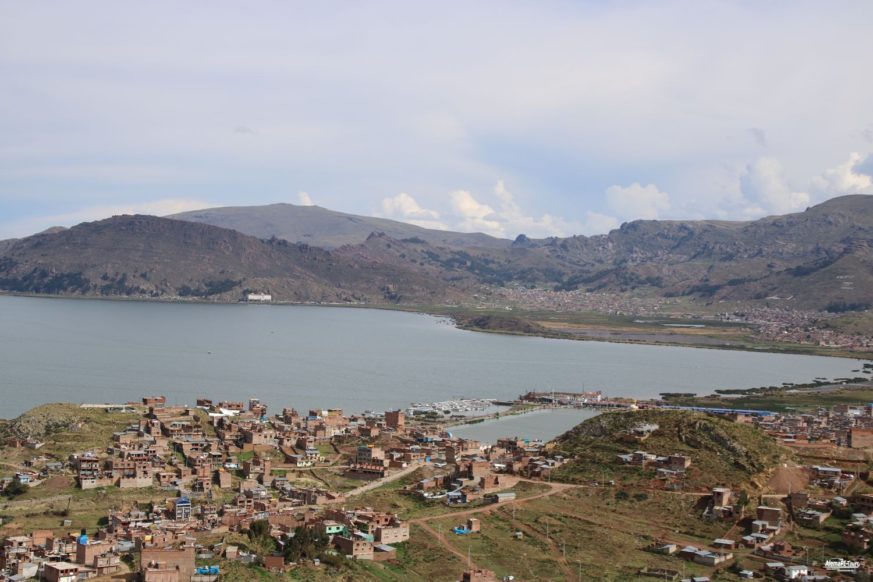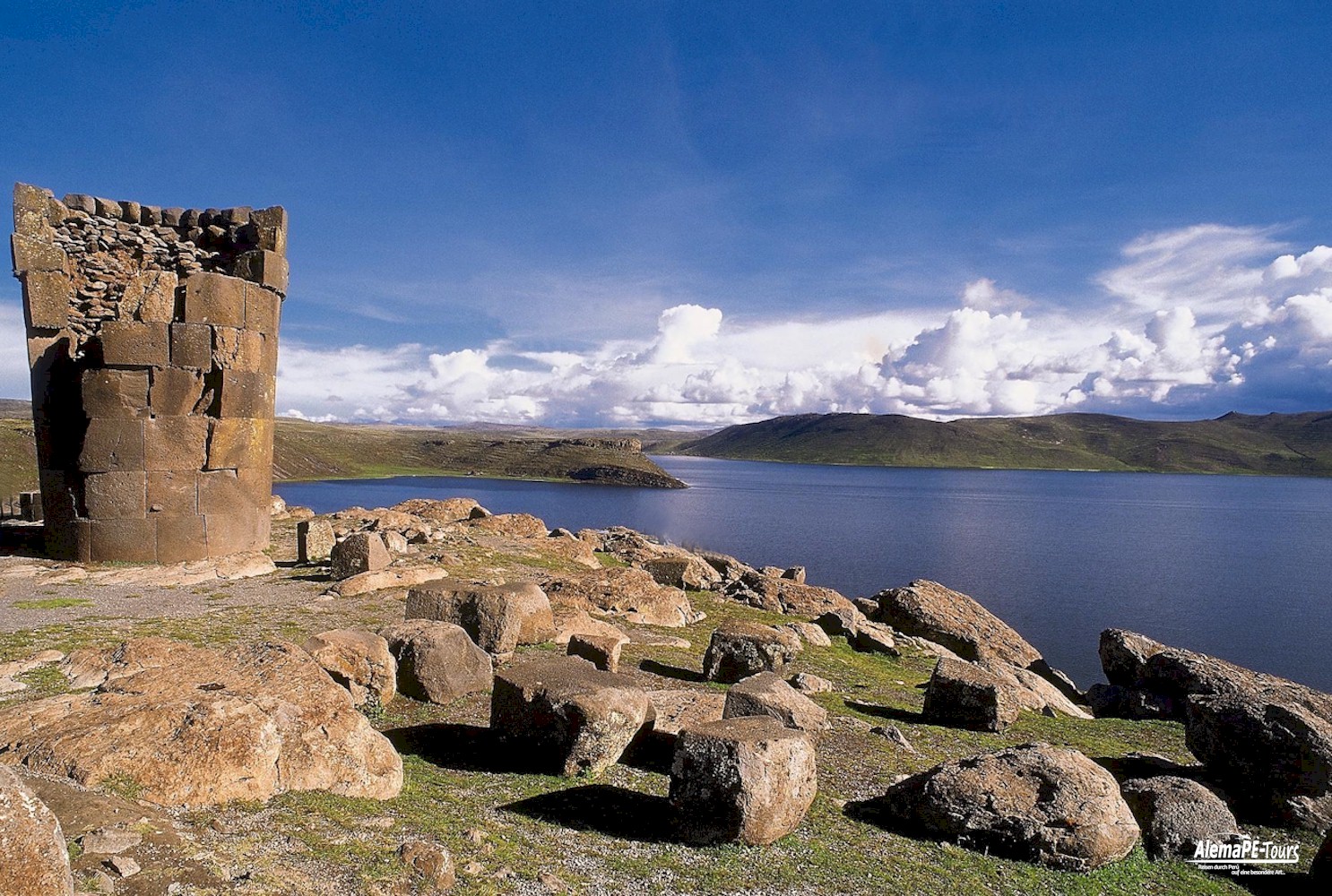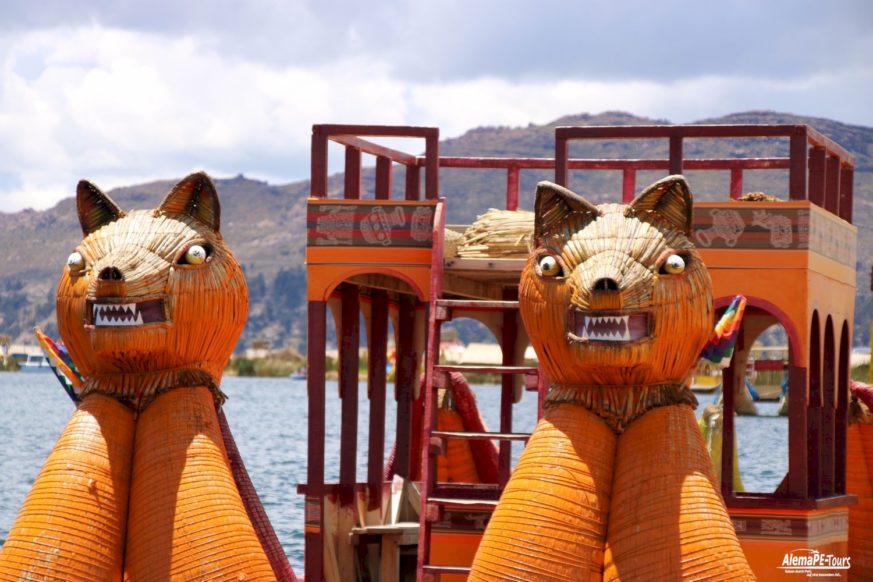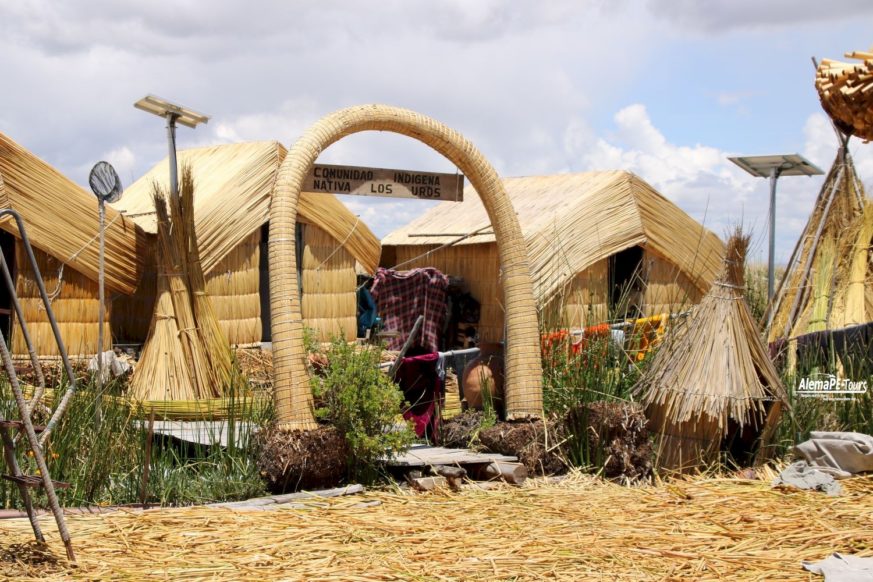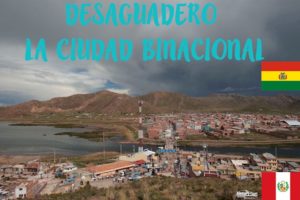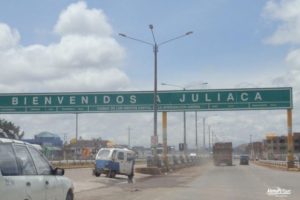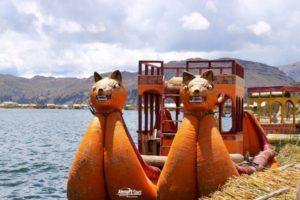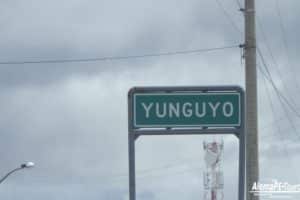Puno
Puno – About the town and region
Puno is the capital of the Puno region with about 125,000 inhabitants and is located at 3,800 meters above sea level on the shores of Lake Titicaca in southern Peru. The city was founded on November 4, 1688 by the viceroy Pedro Fernández Castro Andrade, the Conde de Lemos. With Puno, most people associate natural Lake Titicaca and the floating Uros. But apart from these well-known things, Puna is also the city of silver (Ciudad de Plata), as in earlier times some of Puno’s silver mines belonged to Peru’s richest silver mines.
Before the spread of the Inca Empire, this zone in the extreme south of Peru was dominated by the Tiahuanaco culture. Legend has it that the first Inca Manco Cápac rose from the waters of Lake Titicaca to found his kingdom at the command of the Sun God. So Puno later became the origin of the Inca Empire.
How to get to Juliaca / Puno
By plane from Lima
By bus
To travel by bus from Lima to Puno, follow the route Lima – Arequipa – Juliaca – Puno. The trip by roads takes on average about 18 hours, where you have to travel 1324 km. At present there is a varied offer of transport companies with buses that leave daily and at different times, being advisable to choose them in the Terminal of Plaza Lima Norte because of the wide diversity that can be found.
By car
If you have your own or rental car, you can follow this recommended route: Lima – Ica – Nasca – Arequipa – (Chivay) – (Canyon Colca) – Juliaca – Puno until you reach the town of Puno.
On this route, you will be impressed again and again by the incredible landscape diversity of Peru. Keep in mind that it is a long journey and you have to cover at least 1324 km in 18 hours of pure travel time (without detour to Chivay and Canyon Colca, as well as other beautiful destinations). When planning this route as a self-drive driver, we would plan on spending at least a week in order to have enough time for the worthwhile destinations that you will find on this track. It is even better to plan two weeks, which depends on your total stay.
We advise you to take a break at the above mentioned locations, as the drive along the very warm coastal zone, especially because of the infinitely long straight desert tracks, will certainly be very exhausting.
If you want to see more interesting places, we have some more information in our tour programs.
Points of interest
Worth seeing in Puno are the Plaza de Armas, the cathedral and the church of San Juan Bautista. In the pedestrian area between the Plaza de Armas and the Parque Pino, a variety of restaurants serving local dishes invite you for a delicious meal. Visiting the large daily market that stretches across many streets can be quite interesting.
From Puno, in the direction of Juliaca, near the Umayo Lake, are the well-known tombs of Sillustani, an important tomb of the Colla era (pre-Inca era). If you would like to learn more, then please note the article on Sillustani and Atuncolla.
The Lake Titicaca
With a surface of almost 8,400 square kilometers and a height of 3,812 meters above sea level, Lake Titicaca, at a depth of about 280 meters, is the largest lake in South America, which is also used for commercial purposes. The lake connects with its approximately centered in the lake running border Peru and Bolivia. The views from the islands to the mountains of Bolivia are spectacular. Who e.g. knows the German Bodensee, which only covers 536 square kilometers of area, which can be without having been on site already assess how the 15 times larger Lake Titicaca acts. With its deep blue color from January to March, its soothing water surface and the winds that fly over the lake, Lake Titicaca has a special charm.
In addition to the real islands in Lake Titicaca, there are also the well-known floating islands of the Urus (Las Islas Flotantes). These are artificial, Totora-reed-made islands that still house about 2,100 Uros.
Get an overview of Puno and the Lake Titicaca
In order to get an overview of the city, we recommend the three noteworthy viewpoints (Miradore) above Puno to climb.
Mirador Puma Uta
The first is Puma Uta, an oversized mountable statue of this animal. The Puma has always played a major role in indigenous records since ancient times, for it is the symbol of strength and tireless zest for action. The encounter with nature played a very special role among all indigenous peoples and the population of Peru is still very much connected to the myths and stories surrounding this striking figure. The parking facilities directly at Puma Uta are limited and often full. We were able to park each time at the police station at the driveway and so our vehicle was even guarded every time.
Visiting hours: Mon to Sun from 9 am to 4 pm. No entry.
Mirador Cerro de Huajsapata
Here we come to the second vantage point, the Mirador Cerro de Huajsapata, where not quite as many people frolic, as it is quite difficult to reach on foot. This mountain is a natural viewpoint that offers a great view of the city and Lake Titicaca. Here, at the highest point, stands the monument of Manco Cápac, the first Inca and founder of the Inca Empire, looking over the land and Lake Titicaca. In the stories we also told that there are still caves in the hills that connects Puno via extensive underground paths with the Temple of Corichanca in Cusco.
Visiting hours: Mon – Sun from 10 am to 5 pm. No entry.
Mirador Kuntur Wasi
In addition to the Puma, another animal in indigenous mythology plays a particularly important role. It is he “Mallku Kuntur”, the Condor, who is the sign of wisdom and intelligence. To get to the Mirdor “Kuntur Wasi” (which translates as the Condor’s House), it is first of all necessary to climb the steep staircase. There are enough intermediate stations along the stairs, where you slowly get back to normal heart rhythm and also a flatter breath, if you take these breaks into consideration. We must not forget, how are here at an altitude of about 3,800 m.ü.N.N. and the air is less oxygenated than in the lowlands of Peru. We do not recommend a single ascent for two reasons: Firstly, for your own safety, because it is fascinating to admire the beautiful view over Puno and the large harbor basin of Lake Titicaca here later in the evening Most teenagers have often come to raids. In a group, on the other hand, there is less of this risk, since several people usually feel different (mostly louder) when perceived danger. The second reason is the height. It is also better not to be alone for health reasons, because someone can help support it, but if it should be because of the altitude sickness.
Visiting hours: Mon to Sun from 8 am to 5 pm. No entry fee.
The Cathedral of Puno
The cathedral is a Roman Catholic church built in the spanish Baroque style of the 17th century. Like many other churches in all of Peru, it has its place in the Plaza Mayor (main square). On the front, the walls were decorated by the peruvian sculptor Simón de Asta with very decorative elements from the local flora and fauna. Inside the church, the indigenous culture mixes with the Spanish Baroque style.
Municipal Museum Carlos Dreyer
In the rooms of this museum are exhibited archaeological remains of local cultures and valuable paintings by local artists, all from the pre-Inca, Inca, colonial and republican eras. You can also see gold pieces of the treasure of Sillustani. The Municipal Museum Carlos Dreyer is located in Jr. Conde de Lemos 289, one block from the Plaza de Armas.
Virgen de la Candelaria Sanctuary
The visit to this temple can not be stopped if you travel to Puno. Very striking on the outside and inside. Inside, the venerated and adored image of the Virgin Mary of Candelaria, patron saint of Puno, is kept. Its festivity is celebrated on February 2, where dance, music and religiosity are combined in the largest celebration of Puno, the Feast of the Virgin of Candelaria, which brings together thousands of national and foreign visitors. The Virgen de la Candelaria Sanctuary is located in the jirón Lima, three blocks from the Plaza de Armas.
Arco Deustua
This monument of great historical and heritage value for the city of Puno. It is a picturesque stone monument carved with two lateral roundabouts, and was built in 1847 (date observed in the main part of the arch) by the Puneños under the direction of General Alejandro Deustua, in honor of the memory of Peruvians They fought for independence in the battles of Junín and Ayacucho in 1824. The Deustua Arch is located in the 2 block of Jr. Independencia, six blocks from the Plaza de Armas.
Cerro Huajsapata
This hill, 45 meters high, is a natural limestone viewpoint from which you can see the city of Puno and Lake Titicaca in all its splendor. At the top is the monument to the Inca Manco Cápac, founder of the Inca empire. Cerro Huajsapata is located four blocks from the Plaza de Armas of Puno, towards the northwest of the City.
Balcón del Conde de Lemus – translated: The balcony of the Duke
This structure was one of the first in Puno and was built in 1668 after the founding of the city. According to stories, Viceroy Pedro Antonio Fernández de Castro lived in this building to quell a regional uprising. Today it houses a gallery and the branch of the National Cultural Institute.
Casa del Corregidor
The yellow-colored building is dominated by a quaint café where you can sit outdoors in good weather. This is a meeting place for many tourists and especially backpackers, as there is usually a lively exchange of information with each other.
The harbor area
At the port itself, the market stalls were renewed in 2016. There is also the daily market in which takes place mainly locals do their business.
Sillustani
The grave towers from the 13th to 14th centuries come from the Colla culture. It takes about 30 minutes to get there. If you want to know more about Sillustani and the tombs, read our article on Sillustani and Atuncolla.
Museum of the Totora
This museum shows a little the culture of Puno. Inside, it exhibits pieces made from totora, an important material in the life of the inhabitants who live around Lake Titicaca. It has a workshop where tourists can participate in the selection of totora, weaving techniques and demonstration of them. Also, visitors can buy different items made from totora. The Totora Museum is located 7 km from the city of Puno, in the community of Chimu, on the shores of Lake Titicaca.
Where to stay
Puno actually offers every category of hostels and hotel for every budget. Not far away is Juliaca, the airport where flights to and from Lima, Arequipa and Cusco go. This is actually the fastest, but not the most worth seeing way to get to Puno. If you want to see more of the country and its lovely people, we recommend that you do it either with a rental car, a guided tour or one of the overland coaches. The direct connection from Lima with a night bus takes about 18 hours to reach Puno without any further stops.
Traditional dishes
- Alpaca fillet
- Cancacho
- Huarjata
- Pesque
- Sopa chairo


